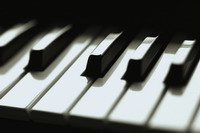Piano Sheets > Jimmy Van Heusen Sheet Music > But Beautiful (ver. 1) Piano Sheet
But Beautiful (ver. 1) by Jimmy Van Heusen - Piano Sheets and Free Sheet Music

About the Song
"But Beautiful" is a popular song with music written by Jimmy Van Heusen, the lyrics by Johnny Burke. The song was published in 1947.
One of five songs written by Burke and Van Heusen featured in the Paramount Pictures movie Road to Rio (1947), it has been performed by such musicians as Bill Evans, Stan Getz, and Bing Crosby.[1]
Johnny Hartman recorded the song for his 1958 album, And I Thought About You.
Shawn Colvin sang the song for AT&T's concert for the benefit of the Walden Woods Project and the Thoreau Institute.
Barbra Streisand recorded the song for her album "The Movie Album" (2003).
The original key is G major and has the form A-B1-A-B2. It is usually performed as a ballad. Jimmy Van Heusen (January 26, 1913 - February 7, 1990), was an American composer. Writing songs for films and television, he won four Academy Awards for Best Original Song, and an Emmy.
Christened Edward.
Download this sheet!
About the Artist

Random article
The essentials of piano sheet music Most people have the notion that sheet music is a very complicated notation and reading it very difficult. However, this is not true as understanding sheet music piano is just a matter of transcribing the various musical notes written.
Uses of sheet music
Piano sheet music is nothing but piano notes written in standard notations. You can avail such free sheet music online from various websites. The main use of sheet music piano is to help aspiring musicians recreate the same sequence of notes as performed by the composer of the piece. It is a method where a specific musical composition is recorded in written form using music notes. The ultimate aim of reading sheet music is to recreate the same score in as accurate a manner as is possible.
(More...)
